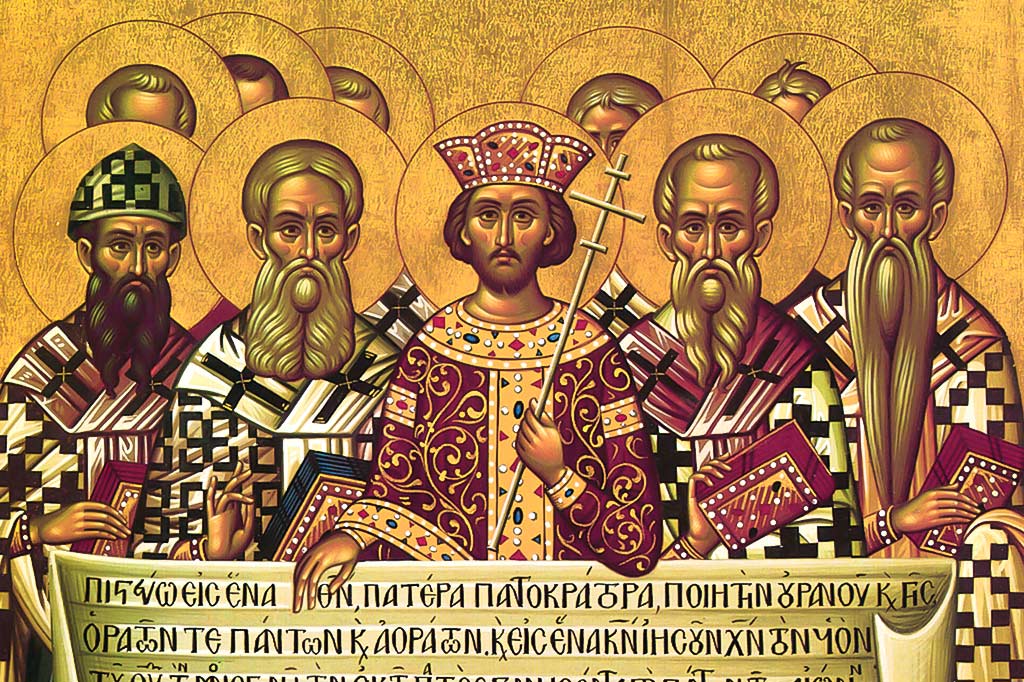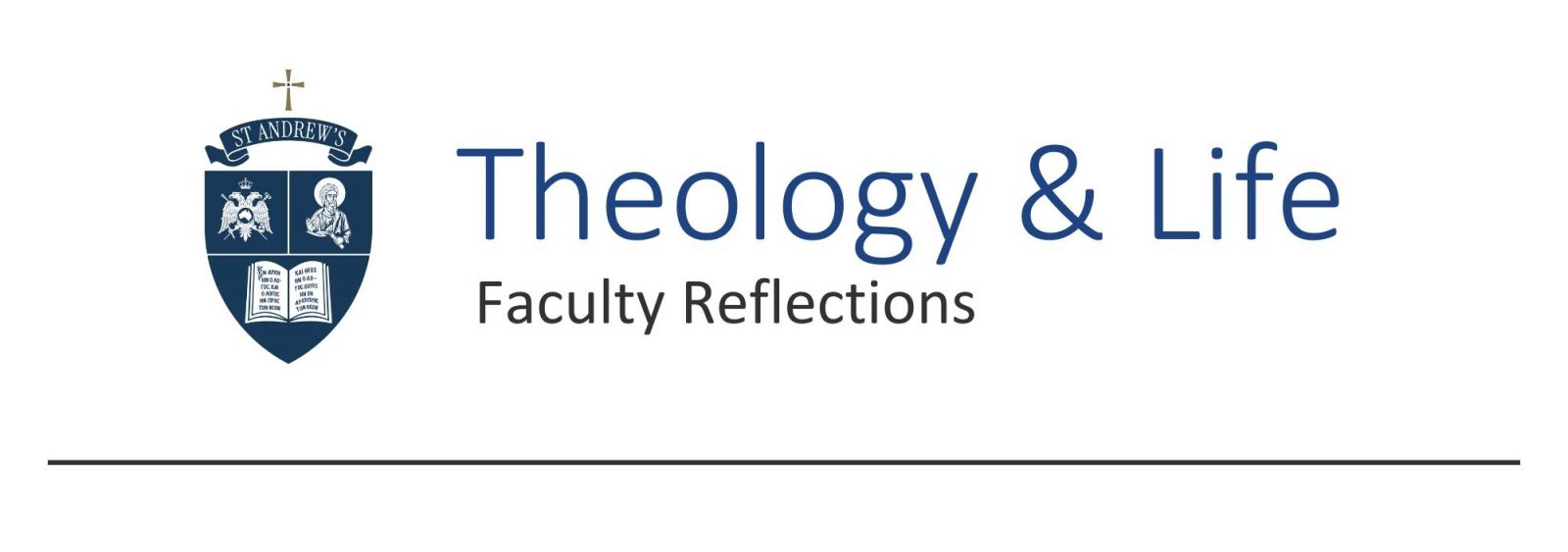- Home
- About us
- Students
- Courses
- Research
- Library
- News & Events
- Gallery
- Contact
- Our Blog
Latest News

Sunday of the Fathers of the
First Ecumenical Council

by Very Revd Father Anastasios Bozikis (Lecturer in Church History)
The Sunday before Pentecost is dedicated to the Holy Fathers of the First Ecumenical Synod who formulated the Church’s teaching on the divine nature of Jesus Christ and composed the greater part of the Symbol of Faith or Creed that is still recited at Baptisms and in the Divine Liturgy. The Council was summoned by the first Christian Roman Emperor, Constantine the Great, and met in the city of Nicaea in Asia Minor in 325 AD, marking a milestone in Christian history that has shaped theological discourse and ecclesiastical governance to this present day. As we commemorate the Synod’s 1700th anniversary this year, it is fitting to reflect on its enduring significance for the witness of the Orthodox Church in the contemporary world as we grapple anew with the central question of the Gospel message, namely, “Who is Jesus Christ?”
The Council of Nicaea was primarily convened to address the Arian Controversy, a theological dispute that threatened the unity of the early Church. Arius, a priest from the city of Alexandria in Egypt, argued that Christ was not co-eternal with God the Father, but rather a created being, subordinate to the Father. His catchcry was that ‘there was a time when He [Christ] was not.’ This view was vehemently opposed by the Church Fathers, including Bishop St Alexander of Alexandria and his deacon, St Athanasios, who insisted that Christ was fully divine and of the same essence as the Father. To believe otherwise, they contended, would call into question the possibility of human salvation, for only God is able to restore humanity and therefore Jesus Christ, the Son and Word of God, must be ‘true God of true God’ in order to be able to effect this. The debate was so intense that it led to divisions within the Church, prompting Emperor Constantine to intervene.
St Constantine saw the Church as a unifying force within his Empire. He had already granted Christians religious freedom through the Edict of Milan (313 AD) and sought to resolve theological disputes that could destabilise both the Church and the State. To this end, he convened a Synod in Nicaea, inviting bishops from across the Empire to settle the matter. This was the first such meeting of all the bishops of the Roman world—the oikoumene—and set the precedent for six such subsequent councils that would likewise deal with vital matters of theological importance in the succeeding centuries.
The Emperor personally presided over the opening session and encouraged unity among the bishops. While he initially viewed the Arian dispute as a minor theological disagreement, he soon realised its gravity and supported the formulation of a definitive creed to establish Orthodoxy.
One of the most influential figures at the Council was St Athanasios, who, despite being a deacon at the time, played a crucial role in shaping its theological conclusions. He was a staunch opponent of Arianism and argued forcefully for the full divinity of Christ. His theological insights helped the Council articulate a creed that affirmed Christ’s co-eternity and consubstantiality with the Father.
The most enduring legacy of the Council of Nicaea is the Nicene Creed, which explicitly rejected Arianism and affirmed that Christ is “begotten, not made, consubstantial (homoousios) with the Father”. The term homoousios (Greek: ὁμοούσιος) was crucial, as it declared that Christ and the Father share the same divine essence, leaving no room for Arian subordinationist interpretations.
This Creed became the foundation of Christian Orthodoxy and was later completed at the Second Ecumenical Synod of Constantinople in 381 AD to include a fuller articulation of the Holy Spirit’s divinity as well.
Beyond theological doctrine, the Council of Nicaea also addressed matters of ecclesiastical discipline, issuing 20 canons that regulated various aspects of Church governance. These Canons covered topics such as:
- the place of the pre-eminent Sees of Rome, Alexandria and Antioch in the government of the Church. (The city of Constantinople had not as yet been inaugurated.)
- the proper ordination of bishops and their jurisdiction.
- the manner of reception of lapsed Christians who had renounced their faith during the last great persecution, and
- the prohibition of clergy moving between dioceses without proper authorisation.
These rulings helped standardise Church practices and strengthen its organizational structure.
Another significant issue addressed at Nicaea was the dating of Pascha. Prior to the Synod, different Christian communities celebrated Pascha at different times, leading to confusion and division. Some Churches, especially in Asia Minor, celebrated the Feast on the Jewish Passover no matter what day of the week it fell on. Other communities, such as Rome and Alexandria, insisted that Pascha be celebrated on a Sunday—the day of the Resurrection—following the Passover. The Council affirmed that all Christians should celebrate this greatest of Feasts on the same day and on a Sunday and established a formula to calculate the date, namely that Pascha be observed on the first Sunday after the first full moon following the vernal [Spring] equinox (March 21 on the Julian Calendar) thus ensuring that the Feast of the Resurrection would always be commemorated after the Jewish Passover in any given year. The Orthodox Church continues to use this formula up to the present day.
As we celebrate 1700th anniversary of the First Ecumenical Synod, we are reminded of the enduring significance of the decisions the Church Fathers and the unity in the true Faith that they sought to preserve within the Church. The Feast of the Sunday of the Fathers of the First Ecumenical Synod is an opportunity to reaffirm our commitment to the Faith they so valiantly defended and to seek, once again, to come to terms with the crucial question of “who is Jesus Christ?” for us personally.
.jpg)


.png)